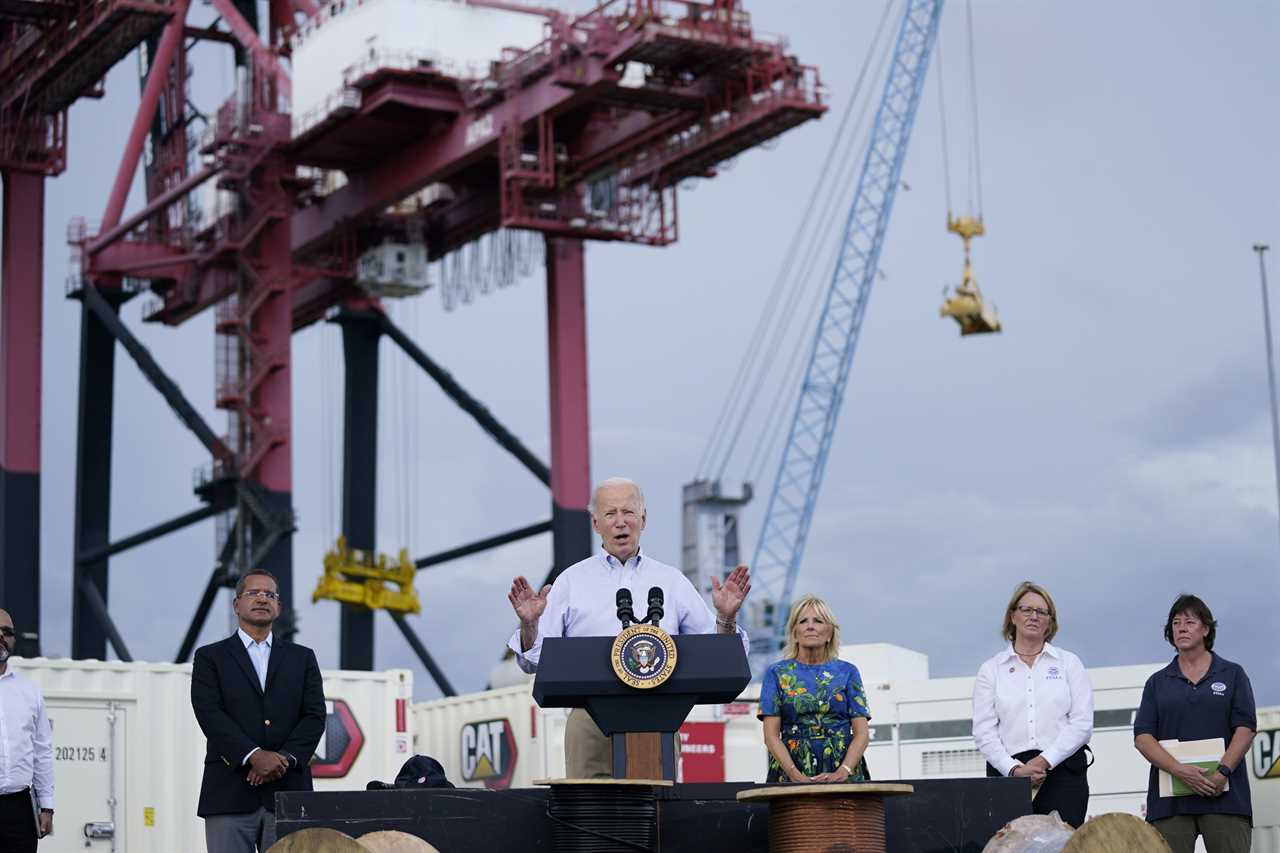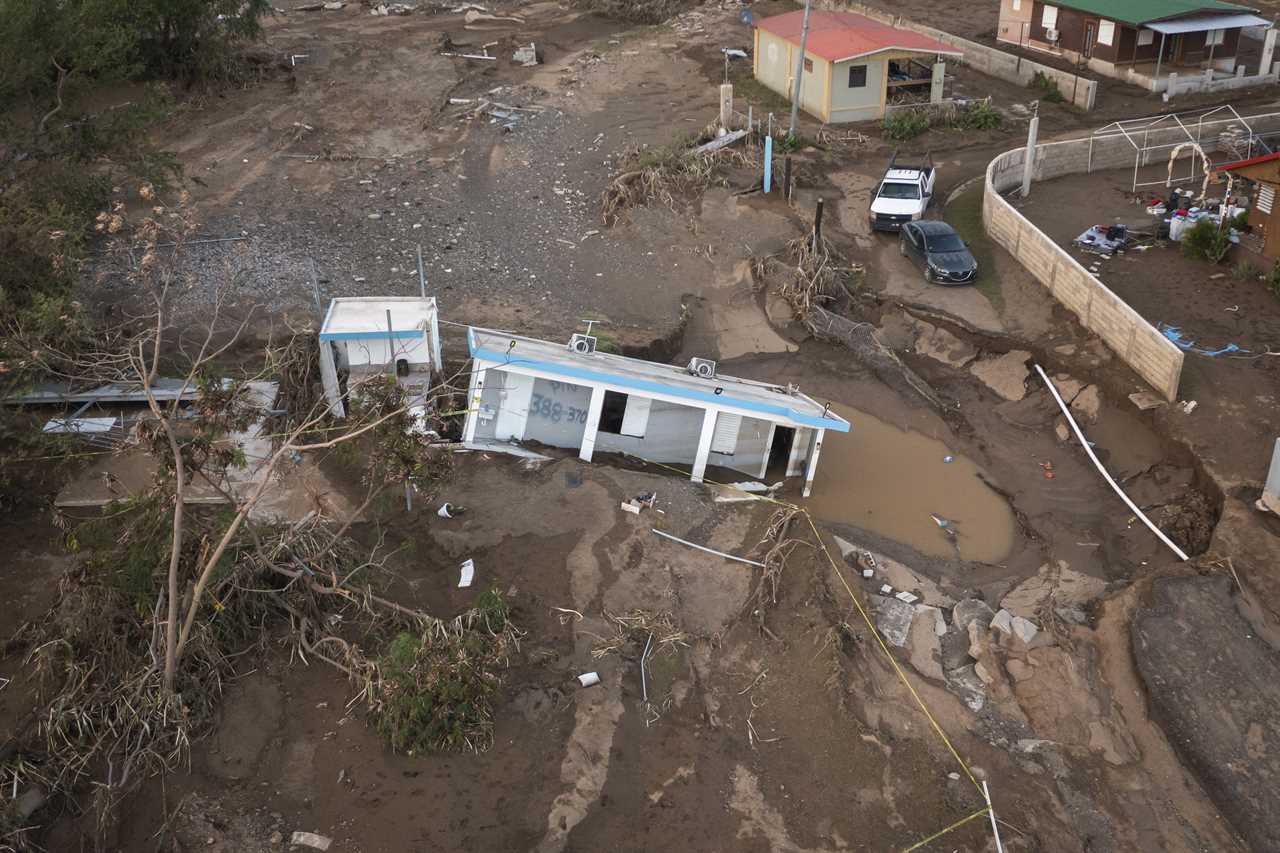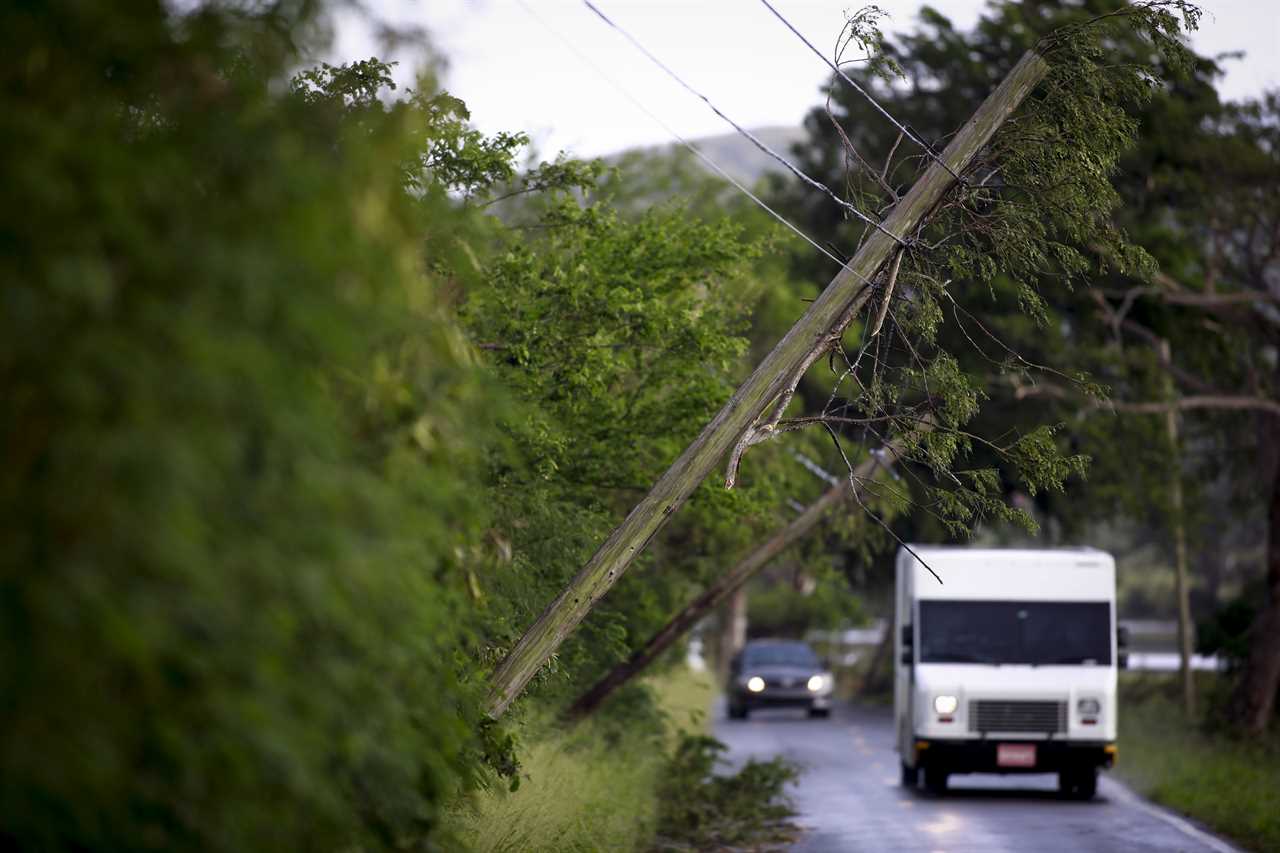
People in Puerto Rico expressed gratitude that President Joe Biden came to their hurricane-struck island — but skepticism that much will change in their struggles to rebuild their lives.
Biden’s visit Monday, and a similar trip planned for Wednesday to Florida, are meant to demonstrate his administration’s commitment to responding to disasters in a compassionate manner, particularly in contrast to former President Donald Trump’s treatment of Puerto Rico. But island residents said they need more than empathy — in particular, reliable electricity, a functioning healthcare system and the long-promised federal aid they need to recover from Hurricane Maria in 2017.
Puerto Ricans and their advocates said residents are scarred by the mental trauma from Maria, which was worsened by artificial barriers imposed by Trump’s administration that kept the territory from receiving the help it was due.
“People are angry. People are hurt,” said Gina DeJesus, an organizer with the activist group New York Communities for Change who is in Puerto Rico. She noted that blocks away from the Port of Ponce, where Biden met with families hit last month by Hurricane Fiona, people are using one generator to power four homes. Fewer than 10 percent of customers in the municipality of Ponce still lack electricity more than two weeks after the hurricane, but power remains unsteady throughout the island.
Still, she said she was “thankful the president came and made time in his schedule to see what’s actually happening” on the island.
Frankie Miranda, president and CEO of the Hispanic Federation, which co-hosted Biden's conversation with community leaders, said people had “enormous expectations” for the president’s visit.
The conversation focused in large part on removing barriers that are preventing the island from receiving billions of federal dollars for projects such as restoring the electric grid, and the need to make the island’s power system more resistant to future storm disruptions. The latter topic includes proposals to expand solar power, which would lessen reliance on fossil fuel-burning power plants at the island’s south end.
“We cannot find solutions to complex problems in 20 minutes or less,” Miranda said, referring to the time limit on the conversation with the president.
But he called the president’s visit an “incredible success” because Biden carved out time to talk to experts on these subjects. The president also made a commitment to Puerto Rico’s recovery that his administration followed up on Tuesday morning.
During his appearance Monday, he called the damage from yet another hurricane five years after Maria “an all-too-familiar nightmare.”
“Puerto Rico is a strong place, and Puerto Ricans are strong people,” Biden said. “But even so, you have had to bear so much and more than need be, and you haven’t gotten the help in a timely way.”
A White House spokesperson could not be immediately reached for comment on follow-up questions about the president’s visit.
Biden’s trip came after Puerto Rican advocates expressed worries that the island’s suffering would fade from the minds of federal leaders and the national news media, especially after Hurricane Ian made its devastating landfall in Florida on Sept. 28.
Hurricane Fiona’s official death toll on the island stands at 29 people, of which 22 were 65 years or older. But experts fear the death toll could be far higher, especially because some of the most devastated regions remain difficult or impossible to reach because of washed-away roads, mudslides and power outages.
The Puerto Rican government initially said 64 people died due to Hurricane Maria five years ago, but later research attributed an estimated 2,975 deaths to damage the storm caused, including to the island’s power grid and health-care infrastructure.
Now, community leaders want Biden’s administration and Congress to dissolve the federally appointed fiscal oversight board that controls the island’s finances, which was created under a law signed by former President Barack Obama.
They also want to repeal a decades-old shipping statute that they say discriminates against island residents, and cancel a contract awarded in 2020 to the company that manages the territory’s power supply. That company has struggled to provide reliable electrical service.
The federal government could immediately help the situation on the ground by granting Gov. Pedro Pierluisi’s request for Washington to cover the full costs of Puerto Rico’s emergency response, debris removal and other recovery actions for 180 days. Biden has committed to 30 days.
“There are many different barriers and conditions that prevent Puerto Rico from being able to access some of these funds,” Miranda said. He noted that the financial woes of the Puerto Rican government would prevent it from sharing those costs with the federal government, as is normally required under disaster declarations.
The president acknowledged the challenges in his remarks, noting that some residents have been living without power and water and have “no idea when it’ll be back again.”
Biden said Monday that he asked Energy Secretary Jennifer Granholm to lead “a supercharged effort” across the federal government, including a team that would use federal resources, technical assistance and additional support to build a more resilient power grid for Puerto Rico.

This effort would include so-called mini grids that provide power over a limited geographic area, reducing dependence on long-distance transmission lines. The advocates in the room with Biden emphasized the need to “decentralize energy in Puerto Rico” and directly asked the president for the administration to examine ways to expand rooftop solar on the island, Miranda said.
The Queremos Sol coalition — whose name means “We Want Solar” — released an open letter before the meeting asking the president to require the Federal Emergency Management Agency to make it a priority to fund locally based renewable-energy projects, such as rooftop solar systems and batteries, rather than fossil fuel projects. They also asked the president to require the agency to distribute funds in ways that comply with the National Environmental Policy Act, one of the United States’ bedrock environmental laws, as well as Biden’s January 2021 executive order on climate action.
FEMA has $9.5 billion set aside for reconstruction and recovery of the electric grid after it was battered by Hurricane Maria. Other pots of money may be available to the island from last year’s bipartisan infrastructure law and other initiatives.
The president expressed during the meeting “that he is a believer” in renewable energy, Miranda said.
“This is a once in a generation opportunity to do this,” Miranda said. “If we don’t rebuild the right way, we won't have this opportunity to do it until decades in the future.”
But November will bring a major test for the future of the island’s energy system, as it could see the termination of the private contractor’s control of the grid — not just due to the length of Fiona-related outages but also because of continuing power failures in the 17 months since it took over. Island residents have been pushing Puerto Rico officials and the regulators overseeing the company to take that action.
Puerto Rico residents have directed their anger for months at Pierluisi, a member of the island’s New Progressive Party, who called the system “stable” in an interview with POLITICO earlier this year. They’ve also expressed ire at LUMA Energy, the private entity that took over management of the electric grid in June 2021.

A protest against LUMA in August led to a clash where police pepper-sprayed demonstrators and journalists near the governor’s residence.
The LUMA contract “shouldn’t have happened,” said Karina Claudio Betancourt, director of the Open Society Foundation’s $20 million post-Hurricane Maria project in Puerto Rico. “It has taken away the power of our community to be able to control a utility that is so important and life saving and essential for our lives.”
The grid’s struggles go back years, stemming partly from under-investment in basic maintenance by the bankrupt, government-owned Puerto Rico Electric Power Authority, as well as the slow flow of the billions of dollars in federal disaster aid.
“It would be great if after five years they actually started working on the grid and investigate LUMA,” DeJesus said.
House Natural Resources Chair Raúl Grijalva (D-Ariz.) believes the privatization of PREPA’s transmission and distribution operations and LUMA’s contract “haven’t worked,” a committee spokesperson said Tuesday. The committee had scheduled oversight hearings that were postponed because of Fiona’s ongoing impact on the island.
The predominantly Spanish-speaking island’s problems are rooted in its status as a U.S. territory with no voting representation in Congress and no electoral votes for the presidency, advocates say.
“Until we can find a way to resolve our relationship with the U.S. … we won’t be able to thrive as a people,” Claudio Betancourt said.
----------------------------------------
By: Gloria Gonzalez
Title: Biden passes the empathy test. Puerto Rico needs more.
Sourced From: www.politico.com/news/2022/10/05/biden-puerto-rico-00060371
Published Date: Wed, 05 Oct 2022 03:30:00 EST






